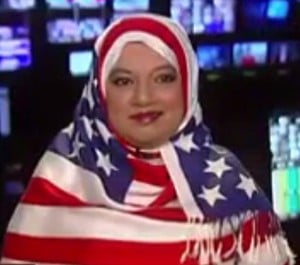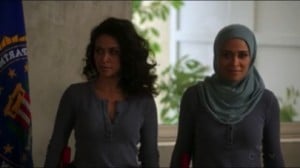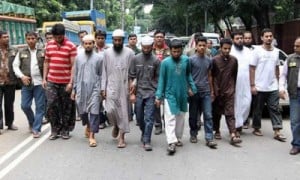September 11, 2001 was different for everybody. But it’s safe to say that U.S. Muslims bore a significant burden. As soon as it was announced that the hijackers were Arab and Muslim, it seemed we’d inevitably be associated with the hereto-unpronounced “tribe.” After all, wasn’t that how America thought of us anyway?
In her book Homeland Insecurity, Louise A. Cainkar argues that the idea that all Muslims were somehow connected to 9/11 was easily accepted because of the preexisting isolation of Arab American community; the idea of Arabs and Muslims as “other” for the most part went unchallenged. The national policy espoused by then-president George W. Bush only furthered the notion that Arab Americans and Muslims were different from the average American. All Muslims, especially women, felt the ramifications.
Cainkar’s interviews show that Muslim women in hijab specifically were more vulnerable to assault than men because their headscarf was seen by some as a rejection of America’s freedom and, in more extreme cases, a way of supporting Al Qaeda.
An Arab American Muslim woman who wears a hijab says,
Literally I could not leave my apartment because I was scared to leave and lived in fear…when I did go out I would have things thrown at my car, remarks made. People who used to be friendly with me were not so friendly…and I understand because I think I’m a reminder of what happened that day.
This testimony shows how hijab is seen as an affront to American culture. That this woman said she understands so perfectly captures the sense of exclusion many of us felt after 9/11. Cainkar found that Arab Muslim women were more likely to feel unsafe than Arab Muslim men: 83% of women surveyed and 43% of men cited certain places where they felt unsafe. In addition, 90% of hate crimes reported in the study involved a woman wearing a hijab. Cainkar says, “Women in hijab were more likely to be spit at, to experience another driver’s road rage, to have items thrown at their cars, to be followed by strangers, to be subjected to hateful language, and to report home vandalism and sieges.”

My own experience with this also supports Cainkar’s study. While in the car with my mother (who was wearing hijab), a man rolled down his window and yelled ”terrorist” at her, flipped us off, and drove away.
Cainkar explains that these reactions made young Muslims study and revisit the Qur’an and Islamic teachings–also something I can attest to. While high school and college peers were coming to terms with their identity, Arab and Muslim Americans were pressed to rediscover their own in an exaggerated superhero sort of way. We had to learn to fight the backlash, to correct the media, and to wear a shield when confronting America’s pointed finger. Our quest was to prove everyone else wrong.
The way in which the Arab community was racially formed in reality and in the public’s imagination is supported throughout the book. Cainkar defines it as a preconceived notion of Arabs as dark-skinned, dark-haired other: e.g., not white and not American. Women were viewed as oppressed creatures that were not allowed to speak or think or dress for themselves. The repeated media stereotyping, media vilification, government profiling, assertions of collective culpability, and political exclusion after 9/11 supported this notion, and made it difficult to untangle any stereotypes about Arabs from those applied to Muslims, as the public always confused the two anyway.
Cainkar explains that appeals for acceptance by Muslim women who wore hijab were rejected. Women who said they chose to wear it were seen as anti-feminists and even potentially more dangerous than women who wore a hijab because someone else told them too. According to Cainkar, Muslim women are now skillfully casting their struggle as a civil rights issue, which is essential to a robust American democracy.
One Muslim woman participant was asked if anything positive happened after 9/11:
The dialogues and friendships I’ve been able have with my neighbors. They don’t realize we have a lot more in common and that I’m not that different then you…there’s a genuine interest in wanting to get to know more about each other…and that’s been very positive.
This woman’s testimony and many throughout the book provide a useful snapshot into the lives, and hearts and minds of many Muslims in the wake of 9/11. As an Arab Muslim woman, the last thing I want is pity. I want to be able to express my misfortune and the crimes committed against me without a violin playing in the background: in doing so, I only seek justice, not revenge. Cainkar proves it is possible to tell the sad part of a larger story without being melodramatic; although she writes with sympathy it doesn’t come off as belittling or sappy, but appropriate.
Homeland Insecurity is the book to read if you (Muslim or not) personally never experienced a sense of exclusion after 9/11. It will help you understand the sense of responsibility and reoccurring headaches of Muslim men and women, and when the respondents discuss their feelings of insecurity and even physical vulnerability, you may even feel patriotic. Take that, Toby Keith!
The irony that gives itself away in the title makes Homeland Insecurity so much more than ethnography, but a humanist calling to return to the liberties every American intimately associates with as the bread and butter of democracy. More importantly, it adds Arab and Muslim American voices, and the testimony of Arab and Muslim women to the national dialogue.











